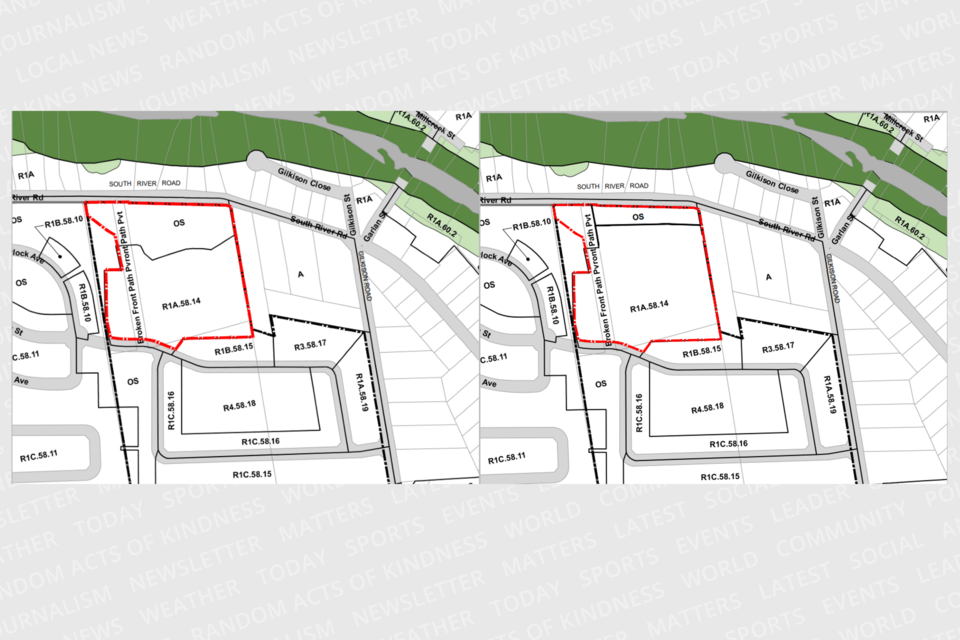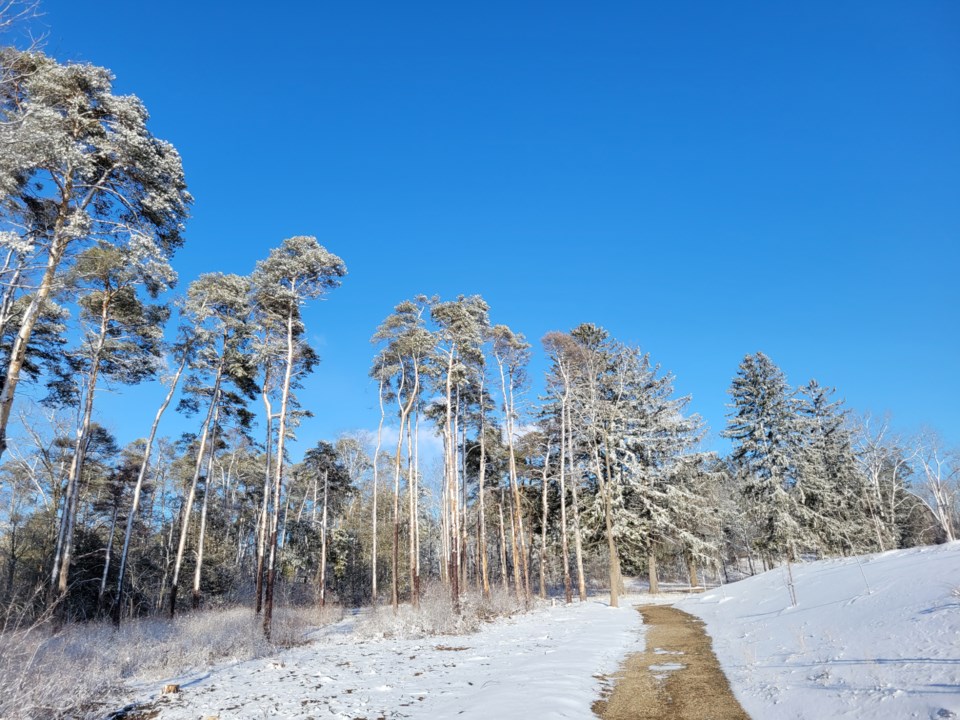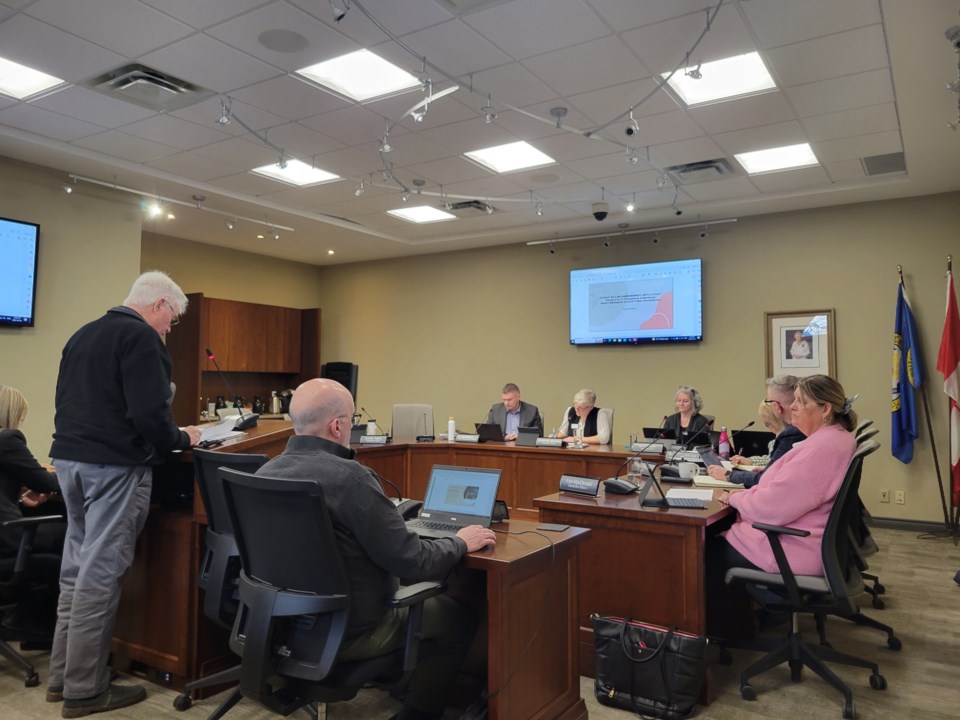CENTRE WELLINGTON – Residents of South River Road and Centre Wellington’s mayor were frustrated with a rezoning request at a subdivision already started that they felt had already been settled years ago through the land tribunal.
The developer of the Youngblood subdivision off South River Road is seeking to revise the boundaries of an open space and residential area which a planning consultant said would facilitate a more efficient development of the residential block.
After being rejected at both the township and county level, the Youngblood subdivision ended up before Ontario’s Local Planning Appeal Tribunal — now called the Ontario Land Tribunal — and mediation alongside the Hayloft Farm subdivision where it was eventually approved in 2018. These subdivisions combined are now marketed as South River Elora and the LPAT decision permits around 750-units combined.
What was being proposed at a Wednesday public meeting was not to increase the number of units. Dave Aston with MHBC planning said what they’re proposing is to refine the open space block, consisting of a woodlot that fronts South River Road, by reducing it and adding it to a residential block that is zoned to have 30 single houses.
“It will actually assist with a more efficient development pattern of the lands approved for single detached residential which will then in turn actually allow for greater ability to grade and save trees,” Aston said.

Several residents from South River Road came to speak at the meeting, many expressing frustration over this subdivision being back for rezoning.
Eugene Kraemer, who lives immediately beside this subdivision, said at the meeting the LPAT decision noted the tribunal heard management efforts would be taken to restore the health of the woodlot.
“This woodlot should be restored to health, why hasn’t the woodlot been restored to health?” Kraemer asked. “It’s no surprise that it’s referred to as a degraded woodlot. That’s what it’s referenced as in the LPAT report.”
He felt the decision issued on this property by the LPAT years ago should stand.
“Nothing has changed after those long LPAT deliberation or mediation sessions and now you are being asked to reduce the size of the open space,” Kraemer said.
Doug Newman was similarly puzzled.
“The applicants have provided really no justification for it and this zoning was settled years ago and it shouldn’t be brought up again,” Newman said. “Nothing has changed with regards to the property, the zoning, the needs of the community, nothing should be overturning the results of mediation and the LPAT hearings.”
Newman said these subdivisions were highly contentious years ago and the plan went through a number of iterations before one was approved, largely through mediation, which included three park spaces and the open space block being discussed presently.
He said this request being justified as creating a more efficient design is not the council's issue.
“Your job is for long term planning, building healthy communities and for God’s sake we need some little pieces of green space,” Newman said. “I can’t fault the developers, their view is short term transactional that’s fine, but you need to balance that.”

Developer Bruce Youngblood said the reduction is ultimately very small and he’s trying to fulfill the agreement to restore the woodlot’s health through this rezoning. He said they did not have the opportunity to do rehabilitation until further environmental analysis was completed.
“In the interim time period, there has in fact been substantial continuing degradation of that area, it has been identified as an ecological desert by the environmentalist, by the ecologist and that was confirmed by the township peer review,” Youngblood said.
Youngblood said they are not looking to remove any native trees whatsoever but estimated upwards of 90 per cent are non-native or invasive species.
“There’s going to be very few trees that exist today remaining when we rehabilitate,” Youngblood said.
Mayor Shawn Watters appreciated the frustration of the community. He noted the township, developers and community spent a lot of money through the tribunal process to get to the point it did.
“I don’t quite understand, why weren’t some of these discussions at the table at the time and so they’re coming back after the fact,” Watters said.
He also recalled how contentious this was at the time but appeared to come out of LPAT resolved and was finding it difficult to revisit the issue.
“We need to run in our lanes, understand what those decisions were at LPAT and look at those and take those things seriously as opposed to going back and relitigating this again,” Watters said. “That’s my concern regardless of the quality of the trees.”
No decision was made at this meeting and a report will come back to council at a later date.



